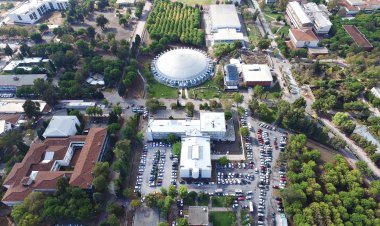Time and volume-ratio effect on reusable polybenzoxazole nanofiber oil sorption capacity investigated via machine learning
Time and volume-ratio effect on reusable polybenzoxazole nanofiber oil sorption capacity investigated via machine learning OFLAZ, Kamil; OFLAZ, Zarina; ÖZAYTEKİN, İlkay; BASTUGAN, Rabia Diesel oil sorption capacities (DOSCs) of polybenzoxazole/polyvinylidenefluoride nanofiber mats with four different groups (-O-, -S-S-, phenylene anddiphenylene) in the main chain structures were investigated. Different experi-mental duration and diesel-oil/tap-water volume ratio pairs were used for dieseloil sorption. No degradation was observed in the nanofiber mat structures afterdiesel oil sorption. The characterizations of polybenzoxazole (PBO) nanofiberswith high diesel oil selectivity were performed by scanning electron microscopy,atomic force microscopy, Fourier transform infrared spectroscopy, x-ray diffrac-tion, thermal gravimetric analysis, differential scanning calorimetry, Brunauer–Emmett–Teller (BET), and contact angle measurement analysis. According tothe result of characterizations, superoleophilic and superhydrophobic nanofibermats show high water contact angle value in the range of 132–140∘and showhigh separation efficiency. In this study, we integrated ensemble gradient boo-sting model (XGBoost) to predict the DOSC of sorbent nanofiber and obtain anoptimal set of conditions to maximize the DOSC. The predicted PBO-E sorbentat the 0.5 ratio of diesel-oil/tap-water measured at the end of the 3rd minuteshowed the most reliable and stable diesel oil sorption with at least 9.39 and atmost 12.33 g/g sorbent with 95% of confidence.

Time and volume-ratio effect on reusable polybenzoxazole nanofiber oil sorption capacity investigated via machine learning OFLAZ, Kamil; OFLAZ, Zarina; ÖZAYTEKİN, İlkay; BASTUGAN, Rabia Diesel oil sorption capacities (DOSCs) of polybenzoxazole/polyvinylidenefluoride nanofiber mats with four different groups (-O-, -S-S-, phenylene anddiphenylene) in the main chain structures were investigated. Different experi-mental duration and diesel-oil/tap-water volume ratio pairs were used for dieseloil sorption. No degradation was observed in the nanofiber mat structures afterdiesel oil sorption. The characterizations of polybenzoxazole (PBO) nanofiberswith high diesel oil selectivity were performed by scanning electron microscopy,atomic force microscopy, Fourier transform infrared spectroscopy, x-ray diffrac-tion, thermal gravimetric analysis, differential scanning calorimetry, Brunauer–Emmett–Teller (BET), and contact angle measurement analysis. According tothe result of characterizations, superoleophilic and superhydrophobic nanofibermats show high water contact angle value in the range of 132–140∘and showhigh separation efficiency. In this study, we integrated ensemble gradient boo-sting model (XGBoost) to predict the DOSC of sorbent nanofiber and obtain anoptimal set of conditions to maximize the DOSC. The predicted PBO-E sorbentat the 0.5 ratio of diesel-oil/tap-water measured at the end of the 3rd minuteshowed the most reliable and stable diesel oil sorption with at least 9.39 and atmost 12.33 g/g sorbent with 95% of confidence.

 Bilgi
Bilgi 















